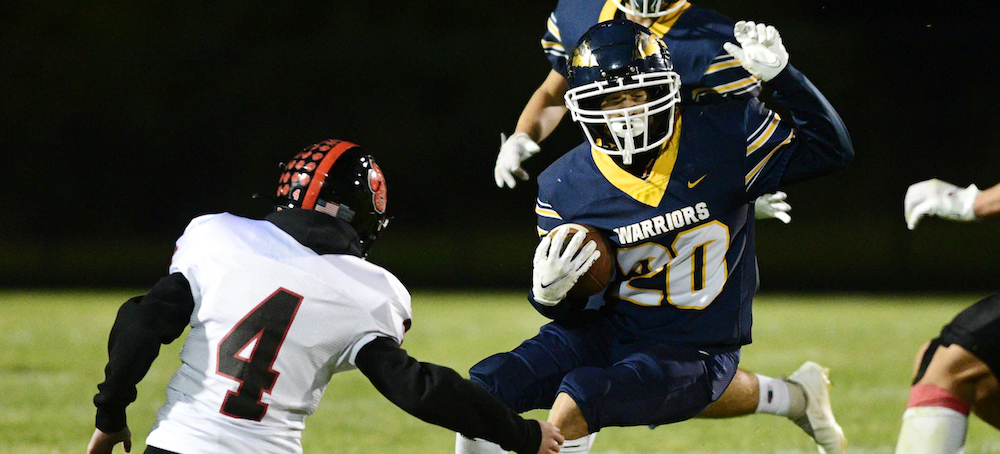Concussions Are a Bigger Problem for Kids' Football Than the NFL
Leana S. Wen The Washington Post A football game at Grass Lake High School. (photo: J. Scott Park/AP)
A football game at Grass Lake High School. (photo: J. Scott Park/AP)
Concussion is a serious injury that can lead to memory loss, inability to concentrate and depression. Repeated head injuries can cause a condition called chronic traumatic encephalopathy, a progressive decline in cognitive function resulting in dementia and early death. CTE is also associated with poor impulse control, aggression, suicidal thoughts and other debilitating symptoms.
The evidence is strong. In a 2017 study, all but one of 111 deceased former NFL players who donated their brains for research had evidence of CTE. Among former college players, 48 out of 53 showed the signs, as did three of 14 who played only in high school.
Robert Cantu, a neurosurgeon who was among the authors of that study and who has advised both amateur and professional sports leagues, told me that a player’s likelihood of developing CTE is determined not by the number of concussions suffered but by the total number of hits to the head and the cumulative years of playing tackle football.
“The risk of CTE starts after five years of football,” he said. “After 14 years, there is a tenfold risk. Eleven years seems to be the tipping point for entering the highest risk group.”
Cantu is among the advocates calling for no tackle football until high school. During a child’s early years, the brain is developing and is most vulnerable to trauma. Deferring contact football shortens the time that children are taking hits to the head and lessens their lifetime risk of CTE.
Chris Nowinski, chief executive of the nonprofit Concussion Legacy Foundation, agrees. His organization recently started a campaign called “Stop Hitting Kids in the Head” that aims to reduce repetitive head impacts by increasing the age at which children start tackle football and other high-risk activities such as heading in soccer, checking in hockey and tackle rugby.
“Most of these kids are never going to play in the pros,” Nowinski said. “Why do we want to harm their futures?”
For those children high school age and above, football can be made safer by limiting tackling during practice. I was surprised to learn that the NFL has already embraced this strategy, while most college and high school teams have not. Thanks in part to the advocacy of their players association, the NFL has rules that prohibit tackling during the offseason and allow only 14 full-contact practices during the regular season.
Among college football conferences, only the Ivy League has eliminated tackling from regular-season practices. In youth football, which Nowinski calls “the wild West,” no national regulatory body exists to enforce player-safety rules.
Movements are afoot to change this culture. Practice Like Pros is a traveling clinic that shows high school coaches how NFL players reduce injuries in practice by avoiding direct hits to one another. Founder Terry O’Neil, a veteran sports producer, told me that coaches are usually skeptical until they watch video after video of NFL teams.
“Players go at full speed to the point of imminent contact, at which point they decelerate, stop or veer to avoid direct hits,” he explained. Players still practice tackling, but on dummies, not one another.
This makes a dramatic difference. Nearly 60 percent of concussions in high school football and more than 70 percent of concussions in college football occur during practice. In the NFL, that number is 19 percent — and it’s down to about 6 percent during the regular season.
O’Neil’s advocacy has resulted in several state high school sports-governing bodies restricting the amount of time they can tackle their teammates during practice. And he has seen schools have major successes afterward. Ramapo High School in New Jersey won a state title. American Heritage School won four Florida state championships in six years.
“The NFL is our model,” he said. “If the pros can practice more safely, then high school teams can do it, too.”
Consider that more than 2 million kids play youth and high school football — compared with about 2,000 active NFL players. Yes, the NFL can become safer, too, but the way to reduce the lifelong effects of head trauma is to start much earlier.



